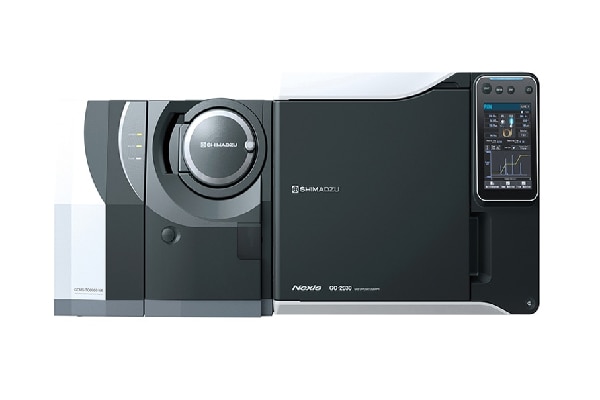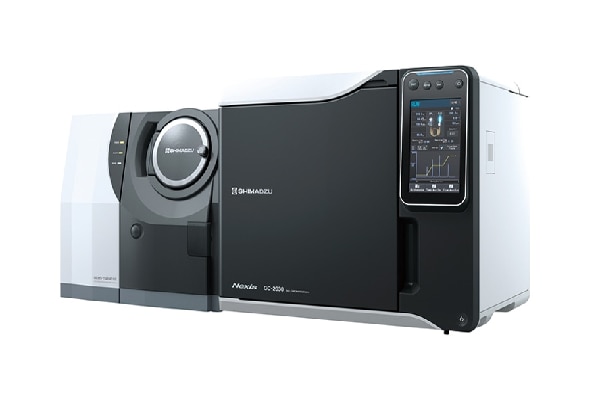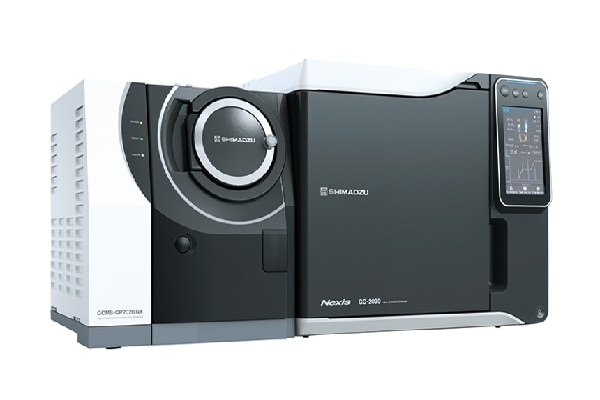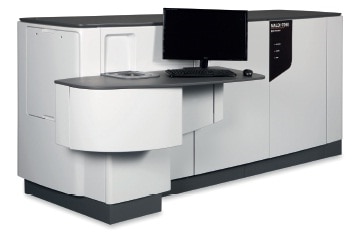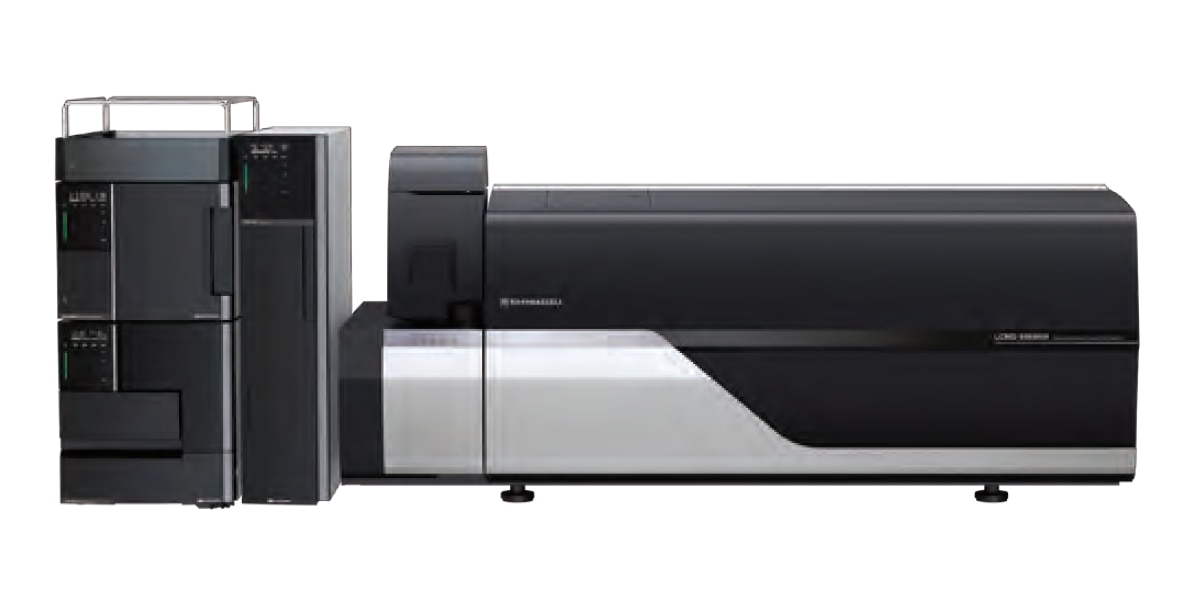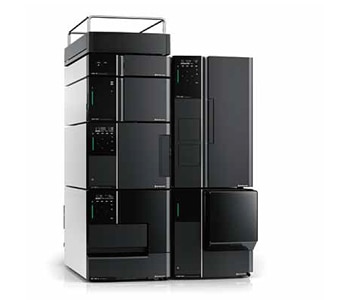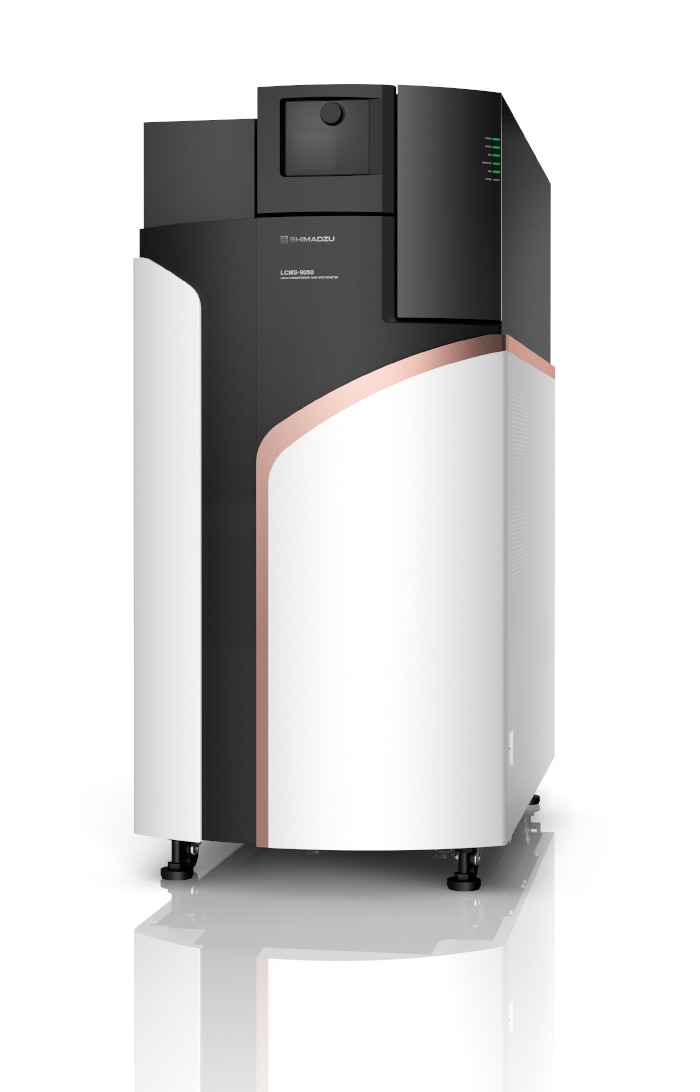LCMS-2020
UFMS
ULTRA FAST MASS SPECTROMETRY
Meet The Need For Speed With Ultra-Fast Mass Spectrometry (UFMS)
For over a decade, Shimadzu has been at the forefront of Mass Spectrometry (MS) innovation. Our dedication has consistently focused on developing technologies that offer practical benefits to laboratories, including faster data generation and maximizing uptime by reducing maintenance. In our pursuit of delivering the best value, our engineers re-evaluate crucial components such as data acquisition systems and ion optics to achieve breakthroughs.
The outcome is a family of instruments with robust operation, class-leading sensitivity, and ultrafast speed—also known as Ultrafast Mass Spectrometry (UFMS). With its high-speed data acquisition capabilities, UFMS is ideal for high throughput analysis, meeting the needs of large compound-panel testing in fields such as food safety, environmental science, and toxicology.
Key Features
The UFMS series provides high-sensitivity performance and greater excellence in data quality, enabling dramatic improvements in laboratory throughput for an ever-widening range of analytical applications.
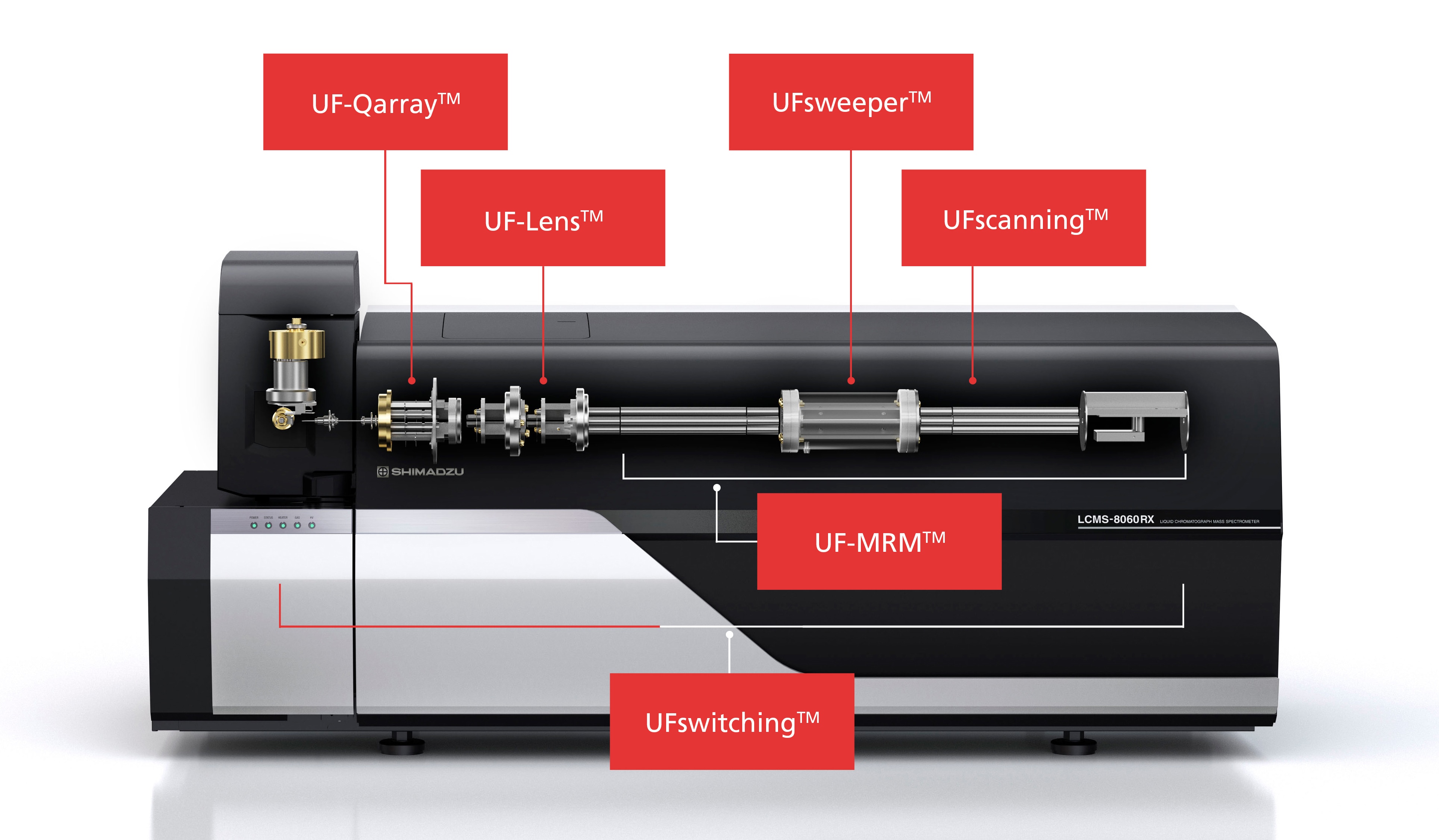
- UF-Qarray™ - Revolutionary UF-Qarray Ion Guide Technology Offers Both Sensitivity and Robustness
- UF-Lens™ - UF-Lens Ion Optical System Maximizes Ion Transmission Efficiency while Ensuring Ease of Maintenance
- UFsweeper™ - UFsweeper Collision Cell Provides Efficient High-Speed Ion Transport
- UFswitching™ - High-Speed Positive-Negative Ion Polarity Switching Technology with No Sensitivity Loss
- UFscanning™ - Ultra-Fast Scanning Technology Maintains Mass Spectral Quality at All Scan Speeds
- UF-MRM™ - UF-MRM Achieves High-Sensitivity MRM Measurements at Ultra-Fast Speeds
How UFMS Can Benefit Your Laboratory

Simultaneous Analysis Of Several Hundred Target Compounds
With UFMS, Shimadzu’s mass spectrometers are capable of analyzing samples very quickly. This means that several hundred target compounds can be analyzed simultaneously with a single analysis in a chromatograph-mass spectrometer system. For instance, it can simultaneously analyze metabolites formed by biological reactions in biological samples (metabolomics), or screen for residual pesticides and toxicological drugs in foods in a single analysis.
High-Speed Data Sampling Improves Quantitative Accuracy and Reproducibility
High-speed mass spectrometers may affect the accuracy (quantitative accuracy) and reproducibility of measuring the concentration of specific compounds in samples. With faster speed, time-dependent data for quantitative analysis can be measured at shorter sampling intervals, which can improve quantitative accuracy and reproducibility by measuring signal peaks with more precision. As a result, they are commonly used for applications requiring precise quantitative analysis, such as determining the concentration of compounds in pharmaceuticals or measuring the level of substances regulated by respective countries in the manufacturing industry.
Expanding the Range of Target Compounds by Simultaneously Analyzing Ions with Both Positive and Negative Polarity
Mass spectrometry measures the molecular weights of target molecules by ionizing them and then separating them with an electromagnetic field. Some molecules are more easily ionized as positive ions and others as negative ions. For instance, when screening for residual pesticides in foods, approximately 50 to 300 compounds are targeted, but not all of them can be detected using the same polarity. This means that comprehensive screening for a large number of compounds can only be achieved by analyzing the target compounds using both positive and negative ion analysis modes. While it is common to measure positive and negative ions separately, Shimadzu’s ultra-fast positive-negative polarity switching technology can save time by measuring molecules with both polarities simultaneously.




